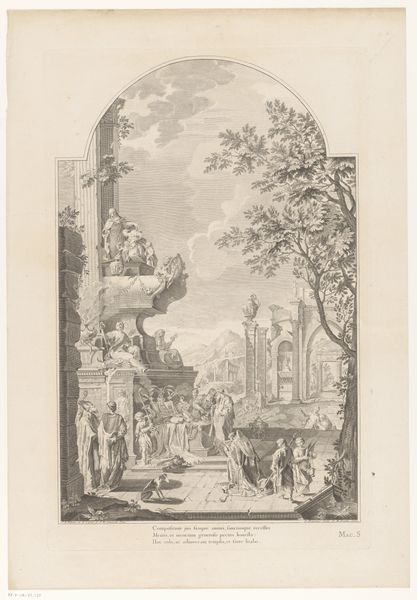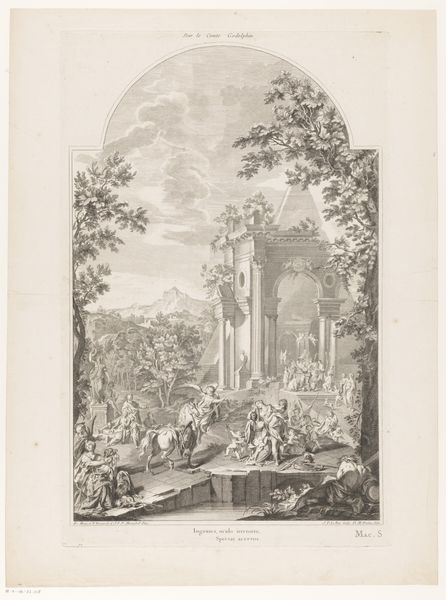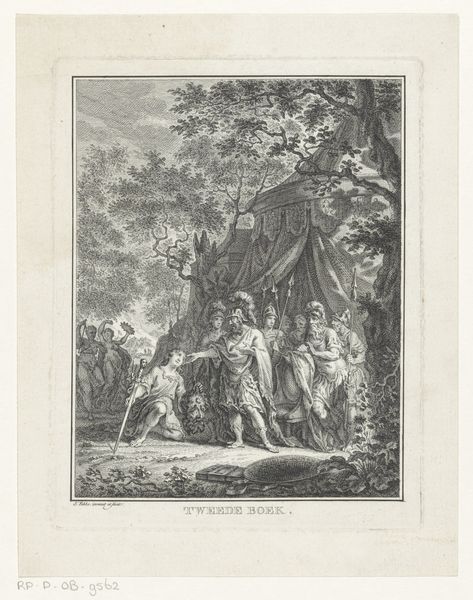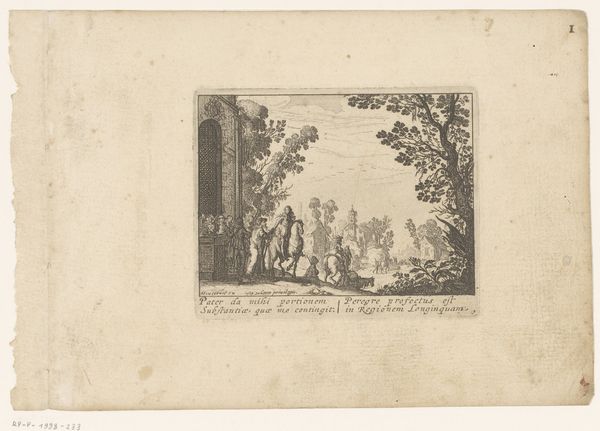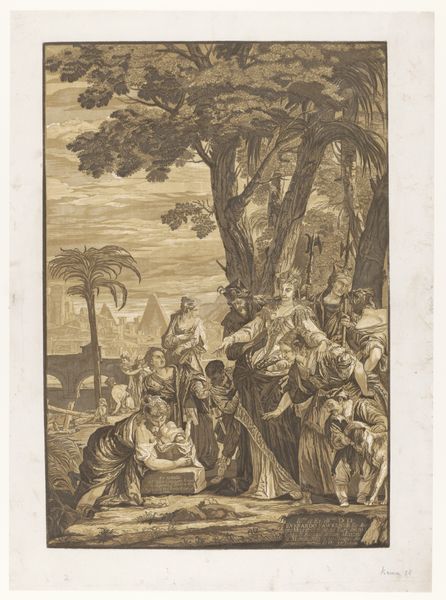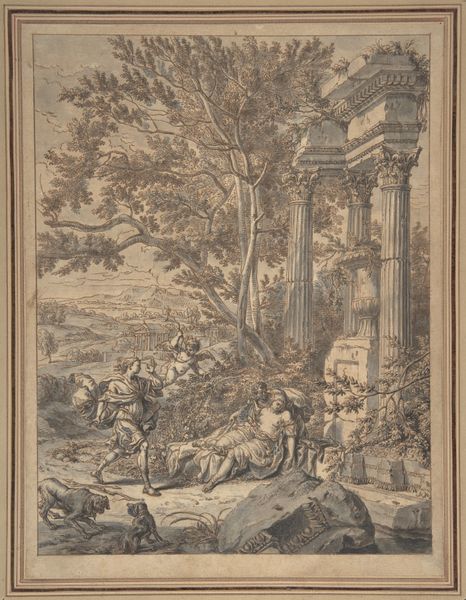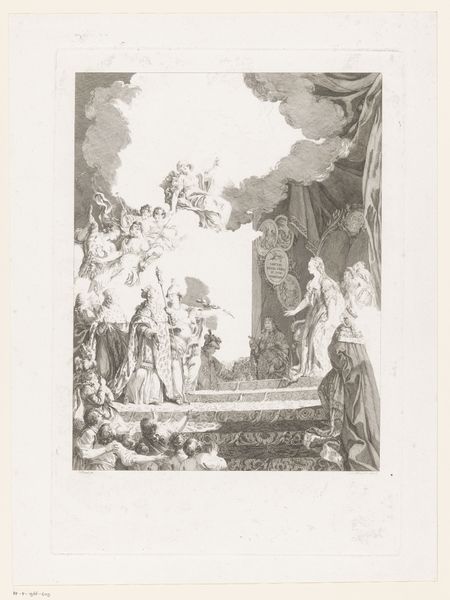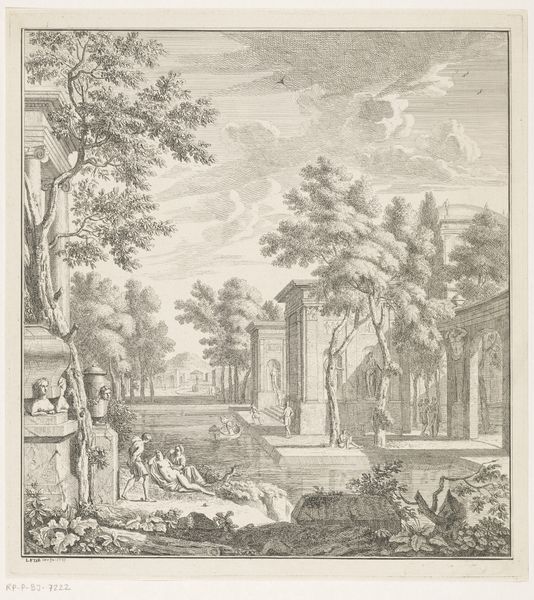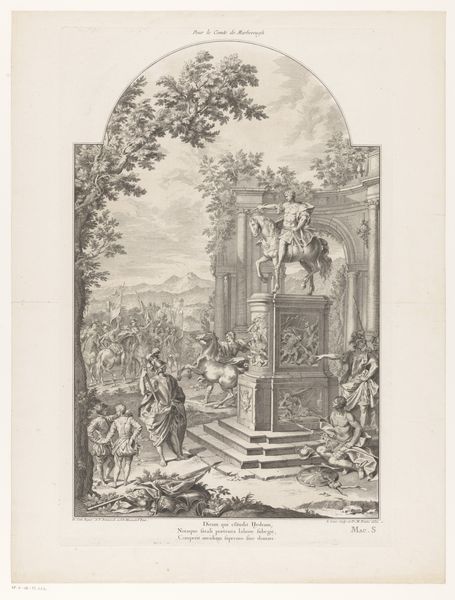
Figuren rond een allegorisch grafmonument voor Charles Sackville, zesde graaf van Dorset 1735 - 1741
0:00
0:00
drawing, print, engraving
#
drawing
#
baroque
# print
#
landscape
#
figuration
#
form
#
line
#
history-painting
#
engraving
Dimensions: height 645 mm, width 414 mm
Copyright: Rijks Museum: Open Domain
Nicolas de Beauvais created this print, "Figuren rond een allegorisch grafmonument voor Charles Sackville, zesde graaf van Dorset," sometime in the 18th century. The print depicts figures gathered around an elaborate, allegorical tomb for the British nobleman, Charles Sackville, the sixth Earl of Dorset. Made in France, this print reflects the neoclassical tastes that were fashionable at the time, drawing inspiration from ancient Greek and Roman art and architecture. The imagined setting is a romanticized landscape with classical ruins, referencing Sackville's status as an aristocrat and patron of the arts. This was the era of the Grand Tour, when aristocrats would travel around Europe, viewing classical art and architecture. What’s interesting here is the imagined monument to Sackville as a display of wealth and status. The print itself becomes a kind of commemorative object. Art historians might look at estate papers, inventories of artworks, and biographical materials to better understand Sackville's collecting habits and his relationship to contemporary artists. In this way, we can understand how art reinforced social hierarchies.
Comments
No comments
Be the first to comment and join the conversation on the ultimate creative platform.
